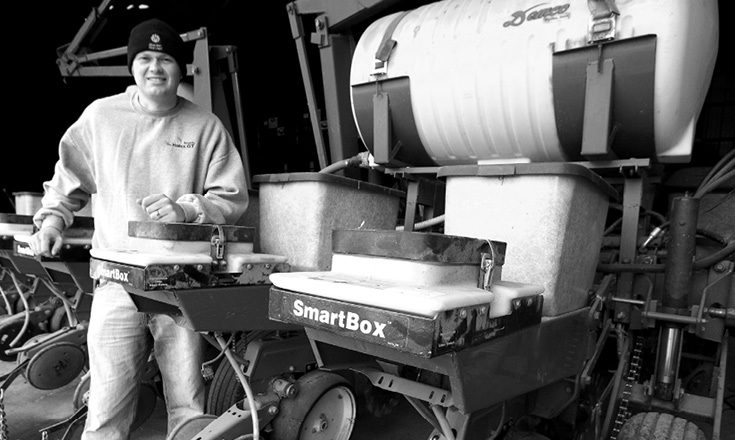No-Till Farmer
Get full access NOW to the most comprehensive, powerful and easy-to-use online resource for no-tillage practices. Just one good idea will pay for your subscription hundreds of times over.

Highly erodible soils shaped into gently rolling hills seemed to Nate Ronsiek like the perfect place to implement the no-till farming practices he learned as a student at Kansas State University. Ronsiek started developing his no-till plan in 2005 when he began taking over the family farm outside Hawarden in northwest Iowa.
“I have 600 acres of row crops and some alfalfa,” Ronsiek says. “All the farms in this area have grass-backed benched terraces because it’s so hilly. I use no-till for 85% to 90% of the crop. The only place I use some tillage is in the alfalfa.
“I’m beginning my fourth season and it’s been a huge benefit to the operation. I’ve seen yields go up and I spend less time in the field. I really can’t put a price on the time I save. It frees me up to spend more time with my cows at calving time and take care of my seed corn business.”
It was Ronsiek’s late father, Vince, who introduced him to the conservation practices he uses. He is the fifth generation on the farm, which was established in 1892.
Keeps It Simple.
Ronsiek rotates corn and soybeans. He says he doesn’t use any special attachments on his planter other than row cleaners.
“It moves the trash out of the way when you plant corn and makes it easier for the ground to warm up,” Ronsiek says. “I have a few minor adjustments on the back end of the planter, but I just…